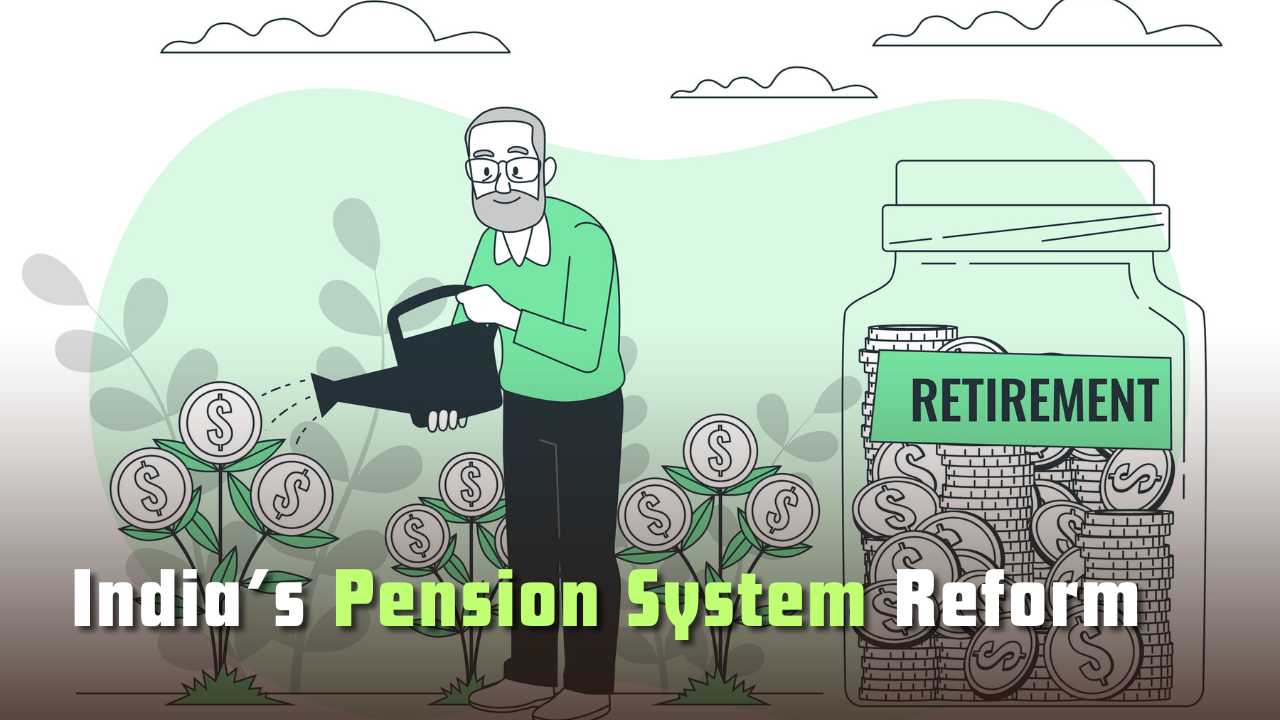India’s pension structure has once again fallen under scrutiny, with the 2025 Mercer–CFA Institute Global Pension Index ranking the country 45th out of 47 systems globally. Scoring just 43.8 out of 100, India received a D grade, signalling severe shortcomings in adequacy, sustainability, and transparency — the three core metrics used to evaluate global retirement systems.

A Grim Report Card for India
According to the report, India trails far behind global leaders like the Netherlands, Iceland, Denmark, and Singapore, which achieved top-tier scores for their robust regulatory systems and well-funded pension frameworks. The findings underline a stark imbalance between ambition and execution in India’s approach to securing post-retirement income.
While India performs relatively better on integrity — owing to improvements in regulation and transparency — the system remains fragile in its ability to deliver adequate benefits and sustain them over the long term. The nation’s limited formal coverage, fiscal stress, and restrictions on pension fund investments have also contributed to the poor ranking.
What the Numbers Reveal
The Global Pension Index 2025 evaluated 52 retirement income systems, representing 65 percent of the global population. Each country was assessed based on three pillars: adequacy (40 percent), sustainability (35 percent), and integrity (25 percent).
India’s 43.8 score placed it below most major economies and emerging markets. In contrast, Singapore topped the rankings with a score of 86.0, followed by the Netherlands, Iceland, Denmark, and Israel. The US came in 30th, Japan 39th, and the UK 12th, showing how wide the gap is between India and its global peers.

Why India Scores So Low
The report identifies several deep-rooted issues behind India’s poor pension performance. A significant portion of the country’s workforce remains in the informal sector without any access to formal pension benefits. This severely limits income replacement after retirement, leading to widespread old-age insecurity.
Fiscal constraints further strain sustainability. As India’s elderly population grows, the government faces mounting pressure to fund social security programs, risking long-term fiscal stability. The report also notes that limited investment flexibility for private pension funds hampers growth, as strict regulatory caps prevent exposure to higher-yield assets like real estate.
How Singapore and Others Lead the Way
Singapore’s Central Provident Fund (CPF) continues to be hailed as the world’s best pension system. The city-state’s mandatory, defined-contribution model ensures universal coverage, prudent investments, and guaranteed returns. By balancing personal savings with government oversight, Singapore delivers financial independence and stability to retirees without burdening public finances.
European systems like those in the Netherlands and Denmark maintain their edge through well-structured multi-pillar frameworks that combine public, occupational, and private schemes. These countries have also ensured high transparency, efficient management, and strong public confidence in their pension institutions.
The Road Ahead for India
Experts say India’s ranking is a wake-up call to strengthen pension coverage, governance, and investment reforms. According to Mercer and the CFA Institute, India’s overall index value could improve significantly by introducing minimum income guarantees for the elderly, expanding coverage to informal workers, and enhancing oversight of private pension schemes.
Moreover, setting a minimum retirement age to prevent early withdrawals could help preserve benefits for genuine retirees. A wider integration of digital infrastructure and financial literacy programs would also encourage participation and trust in pension systems.

The Bigger Picture
India’s low score is not just a reflection of weak pension delivery but also a broader indicator of structural economic inequality. With nearly 90 percent of the workforce employed in the informal sector, the country’s pension challenge goes beyond policy and into the realm of social reform.
As global retirement systems evolve rapidly, India must act decisively to close the gap between vision and implementation. Without urgent reforms, millions risk old-age poverty — a crisis that could strain both households and national finances in the coming decades.
Follow You Finance on Instagram and Facebook for more updates, insights, and expert analysis on India’s economy, finance, and global market trends.















